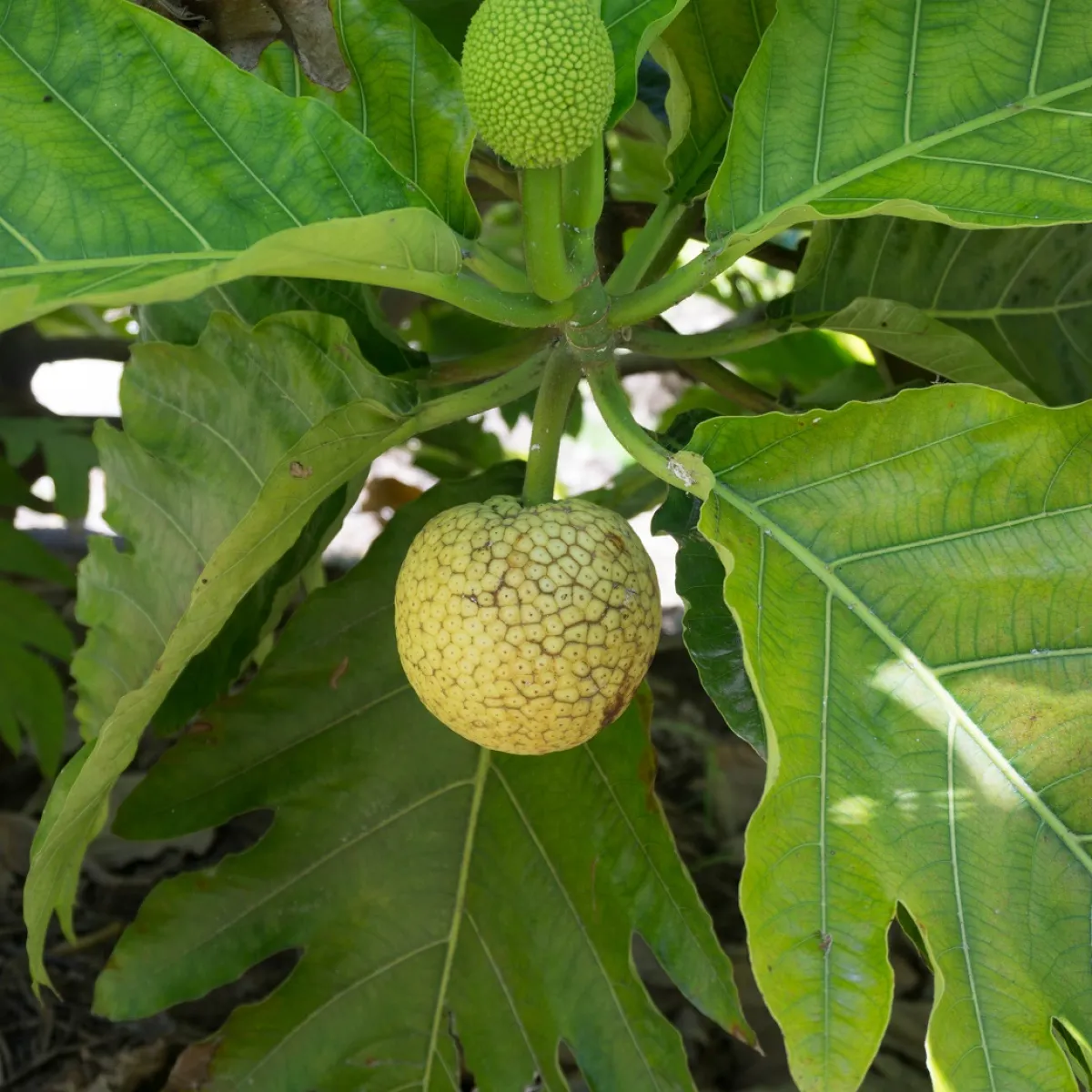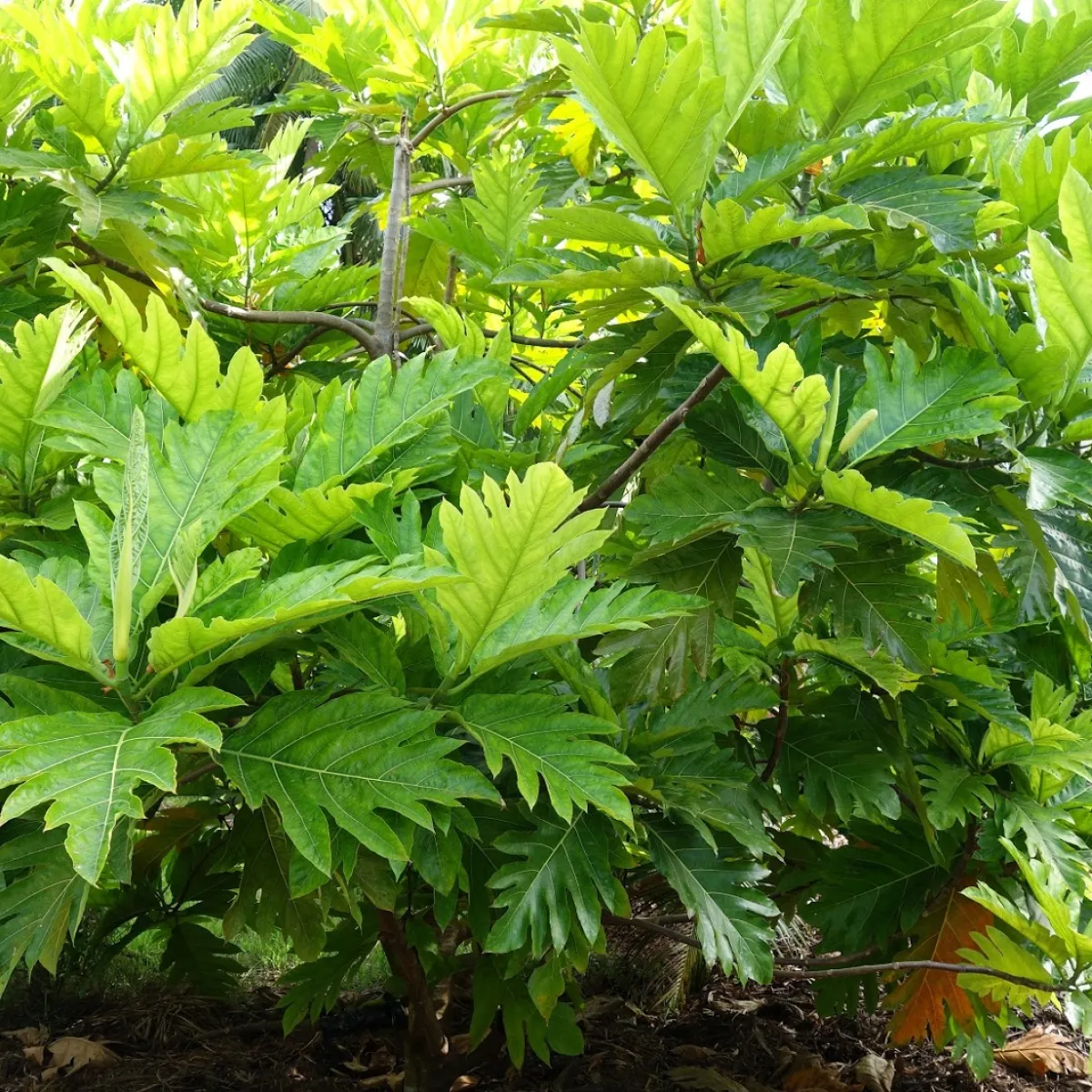
Breadfruit
'Uru (S, T, A), Mei (G, M)
There is a certain variety of bread fruit selected by the Polynesians for hundreds of years. Its fruit is a fundamental staple of the Polynesian diet. All stages of the fruits’ development can be seen on the same tree at the same time. When ready, the fruit has a variety of ways in which it can be prepared. It is even given raw to animals. Its yellow wood is very light and soft, it is quite vulnerable to mushrooms, humidity, and insects. It can be used in sculpture to make canoes or in construction. Its leaves are used to wrap food and its flowers, specifically the male inflorescence (pop ‘uru) is edible when candied. The white latex, sap, and other parts of this plant are used in Polynesian Pharmacopoeia. The sap that is found on the surface of the fruit is called ‘Uru. This tree was introduced to Europe in the 18th century by Captain Bligh who was charged with bringing ‘Uru saplings to the British West Indies. The mutiny that followed was made famous by James Norman Hall’s novel. In 1960, rice and bread arrived in French Polynesia which resulted in a decrease in ‘Uru production, especially the ‘Uru that had an unpopular taste but able to grow on less fertile soil and out of season.
| Family | Moraceae |
|---|---|
| Biogeographical status | Polynesian introduction |
| Life form | tree |
| Abundance on Tetiaroa | rare |
| Ecosystem on Tetiaroa | mixed forest |
S: Society | T: Tuamotu | M: Marquesas | G: Gambier | A: Australs | FP: French Polynesia


